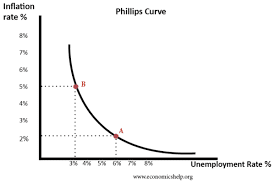Phillips Curve Assignment & Homework Help Online
Are you struggling with the Phillips Curve Assignment? Are you a high school, college, or graduate-level student? Do you need Phillips Curve Homework Help or Economics Assignment Help? Our highly qualified, professional, and skilled team members can provide you with help with the topics listed below.
The Phillips curve was invented in 1958 in the United Kingdom by an economist and engineer named Albert William Phillips. Phillips stated the curve as an inverse relation between Wages and Unemployment. His discovery of the curve was based on data from the United Kingdom. This curve is also known as the “trade-off curve”. ‘The Relationship between Unemployment and the Rate of Change of Money Wages in the United Kingdom’ was the title of his published article. In this article, he showed the negative correlation between the rate of Unemployment and the rate of Inflation. Later on, he showed, the years with low Unemployment tend to have high Inflation, and years with high unemployment tend to have low Inflation.

Phillips concluded that the two Important macroeconomic variables as Inflation and Unemployment were linked in ways that economists had not previously appreciated. Two years later, two economists namely, Paul Samuelson and Robert Solow published an article in the American Economic Review called “Analysis of Anti-Inflation Policy”. This article was similar to Phillips, which showed a negative correlation between Inflation and Unemployment, according to the collected data for the United States. They reasoned that this “Correlation arose because of low Unemployment with high aggregate demand, which in turn puts upward pressure on wages and prices throughout the economy”.
An illustrative graphical description of the Phillips Curve:

The Phillips Curve illustrates a negative association between the Inflation Rate and the Unemployment Rate. At point A, Inflation is low and Unemployment is high. Whereas at point B, Inflation is high and Unemployment is low.
Many Economists were interested in Phillips Curve because they believed that it held important lessons for Policymakers. In particular, the Phillips Curve offers Policymakers a menu of possible economic outcomes. By altering the monetary and fiscal policy to influence the aggregate demand, policymakers could make a choice at any point on this curve. As, Point A, offers high Unemployment and low Inflation. Point B, offers low Unemployment and high Inflation. Policymakers might prefer both low Inflation and low Unemployment, but historical data summarized by the Phillips Curve indicate that this combination is impossible.
Want to know how to proceed?
Fill up the assignment help request form on the right or drop us an email at support@helpwithassignment.com. Feel feel to contact our customer support on the company 24/7 via Live chat or call us at 312-224-1615.
HelpWithAssignment.com provides timely help at affordable charges with detailed answers to your assignments, homework, research paper writing, research critique, case studies, or term papers so that you get to understand your assignments better apart from having the answers. The team has helped a number of students pursue education through regular and online universities, institutes, or online Programs.









